Cursor AI
Understanding and Customizing Cursor
Demo Profiles and Features
Profiles in Cursor let you create isolated environments—each with its own extensions, themes, keybindings, and privacy settings—so you can effortlessly switch between personal, work, or any other context.
1. Navigating to Profiles
- Open Settings > Profiles in Cursor.
- Review your list of profiles:
- default: automatically applied to new windows, containing your standard settings, extensions, and recent workspaces.
- Any additional profiles you’ve created.
Below, the default profile displays installed extensions like Pylance and Python, along with your recent project folders.
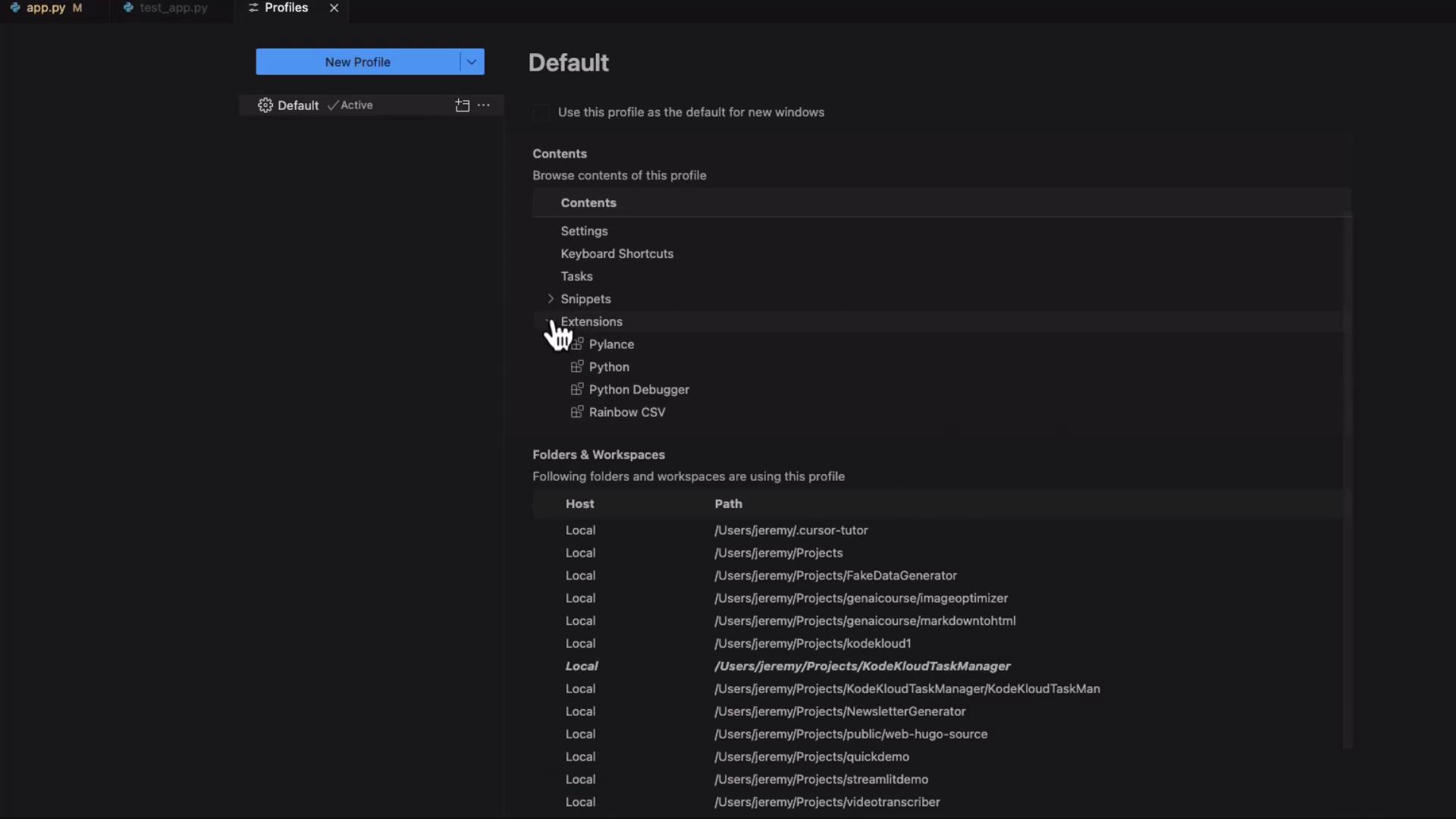
2. Creating a New Profile
Click Create Profile to start a fresh environment—e.g., “KodeKloud.” You can:
- Copy settings, extensions, and keybindings from an existing profile
- Or select only the items you need and build from scratch
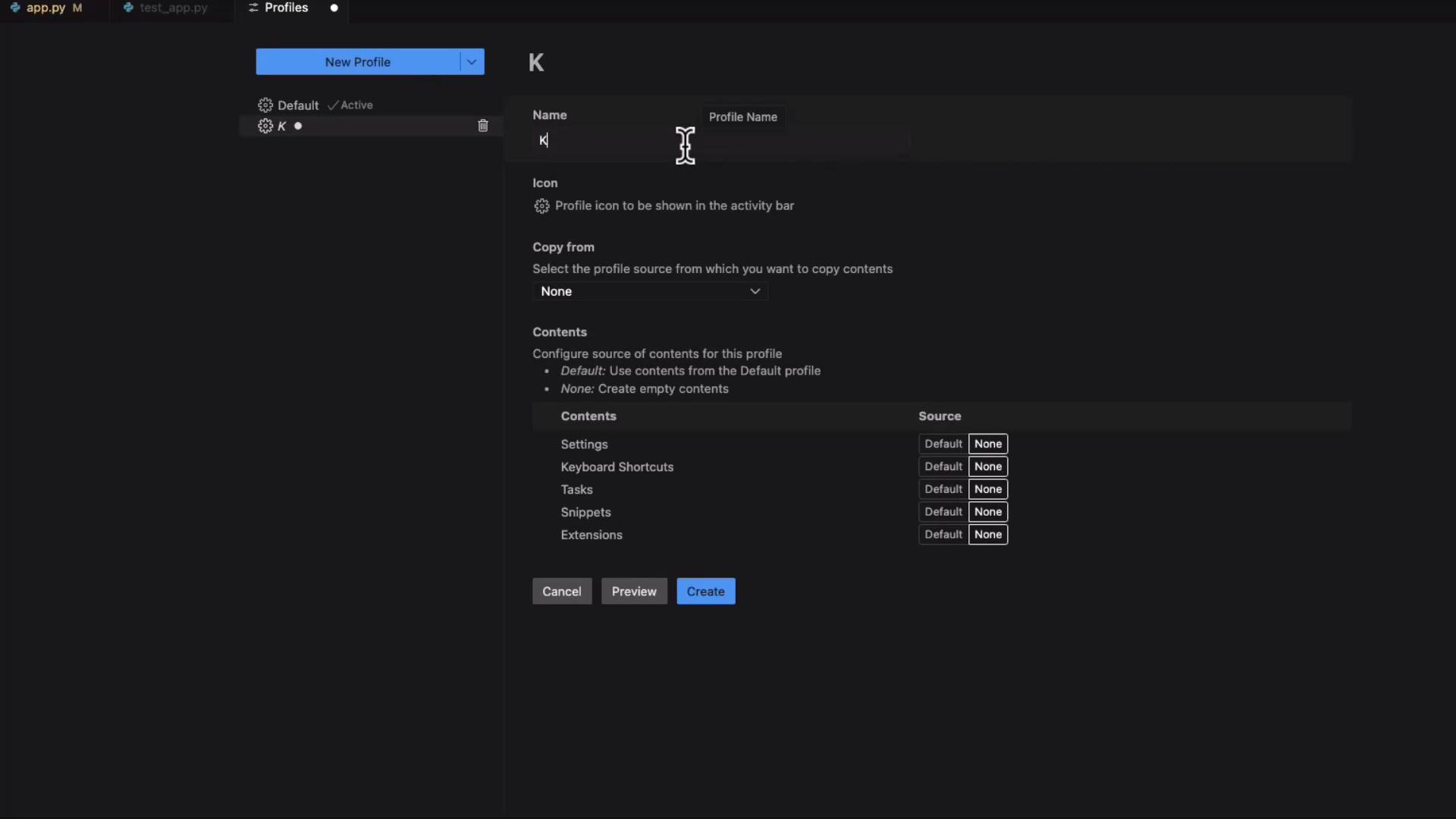
3. Benefits of Multiple Profiles
| Profile Type | Privacy Mode | Ideal For |
|---|---|---|
| Personal | Off | AI suggestions with full context |
| Work | On | Restricted extensions & settings |
| Side Project | Custom | Unique themes and keybindings |
Switching profiles isolates your workflow, so you maintain separate configurations for each project or task.
4. Customizing Cursor Settings per Profile
Select a profile and open Cursor Settings to enable or disable AI features. The signed-in account appears at the top—you can log out and switch accounts anytime.
Note
Importing your VS Code setup accelerates your transition to Cursor.
4.1 Importing from VS Code
Leverage your existing Visual Studio Code configuration:
- Extensions
- Settings
- Keybindings
This import retains your familiar environment and speeds up onboarding.
4.2 Editor Settings: User vs. Workspace
Editor settings apply at two levels:
- User: global preferences
- Workspace: project-specific overrides
For example, adjust font family or tab size for one project without impacting others.
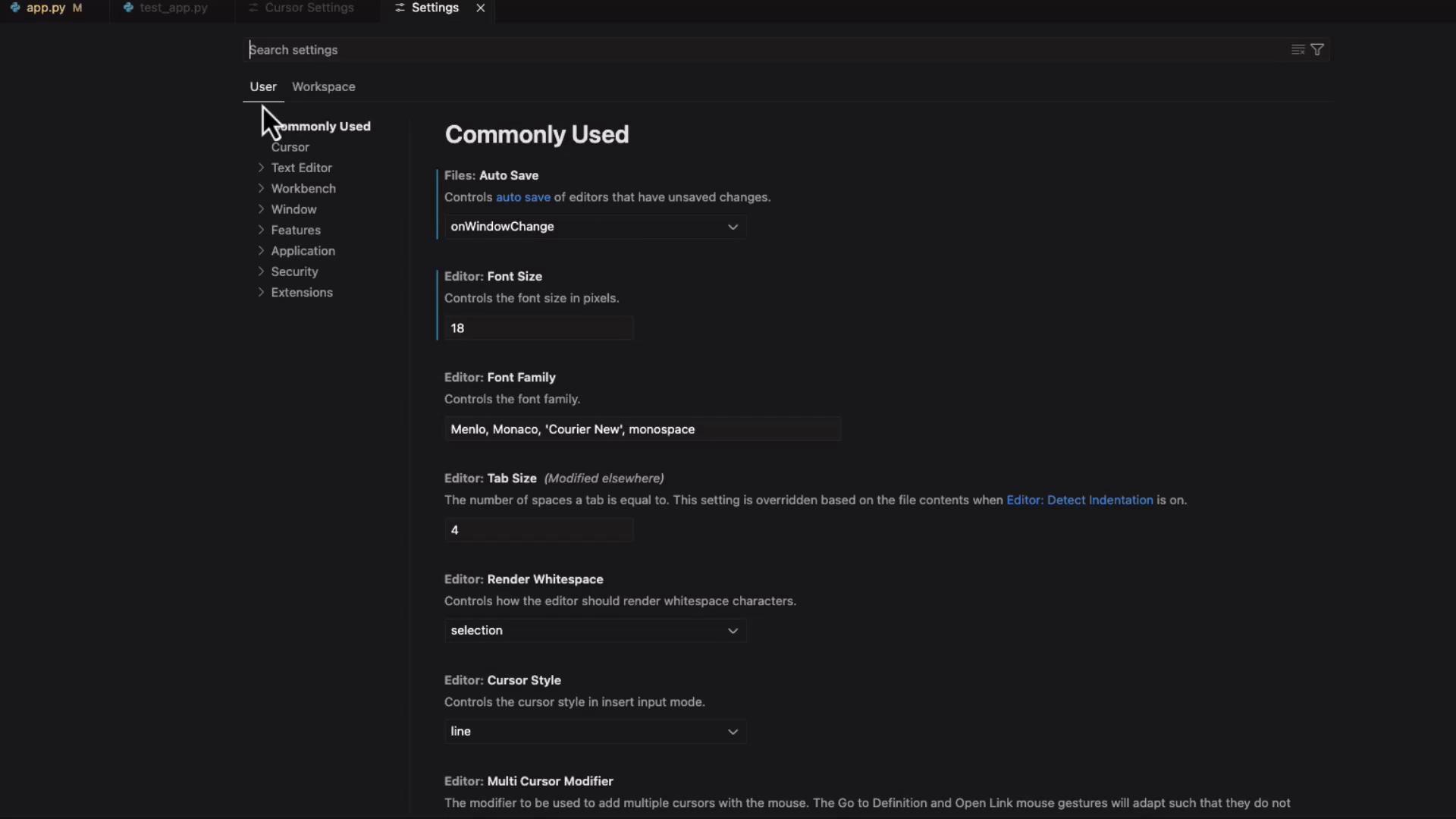
4.3 Cursor-Specific Settings
Under Cursor AI > Full Settings, toggle features unique to Cursor:
- Composer
- File Picker
- Command Center
- And more
Disabling Languages
Exclude file types from AI processing, such as Plain Text or sensitive YAML:
Warning
Disabling a language prevents Cursor AI from analyzing or suggesting code in those files.

4.4 Git Integration & Notifications
- Index Git History: Allow Cursor AI to learn your repo’s structure and relationships.
- Private Mode: Turn off Git indexing for private repositories.
- Notification Toasts: Choose where AI suggestions and alerts appear.
5. Other Key Settings
5.1 Editor Behaviors
- Auto indent
- Auto closing brackets
- Bracket pair colorization
5.2 Diff Editor
Customize diff views:
- Enable or disable CodeLens
- Select diff algorithm
- Choose inline or side-by-side layout
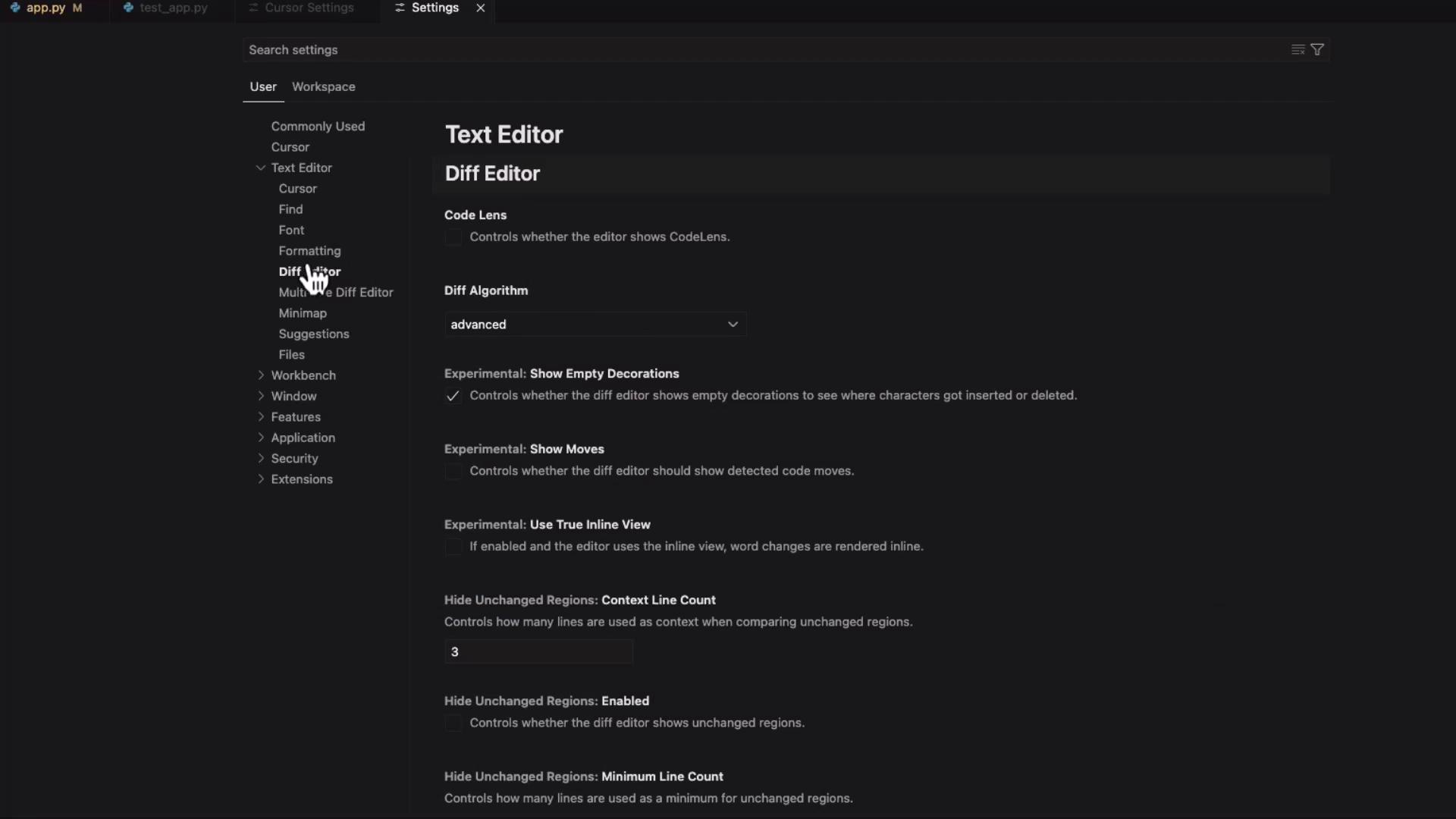
5.3 Window Management
Control how files and folders open:
- New windows
- Reuse existing windows
- Open without arguments

5.4 Language-Specific Extensions
Set extension behavior per language to enforce linting, formatting, or custom rules.
5.5 Search and View
Adjust search options:
- Action bar position
- Collapse/expand behavior
- Default view mode
5.6 Chat Features
Enable or disable:
- Command Center
- Editing preferences
- Chat UI options
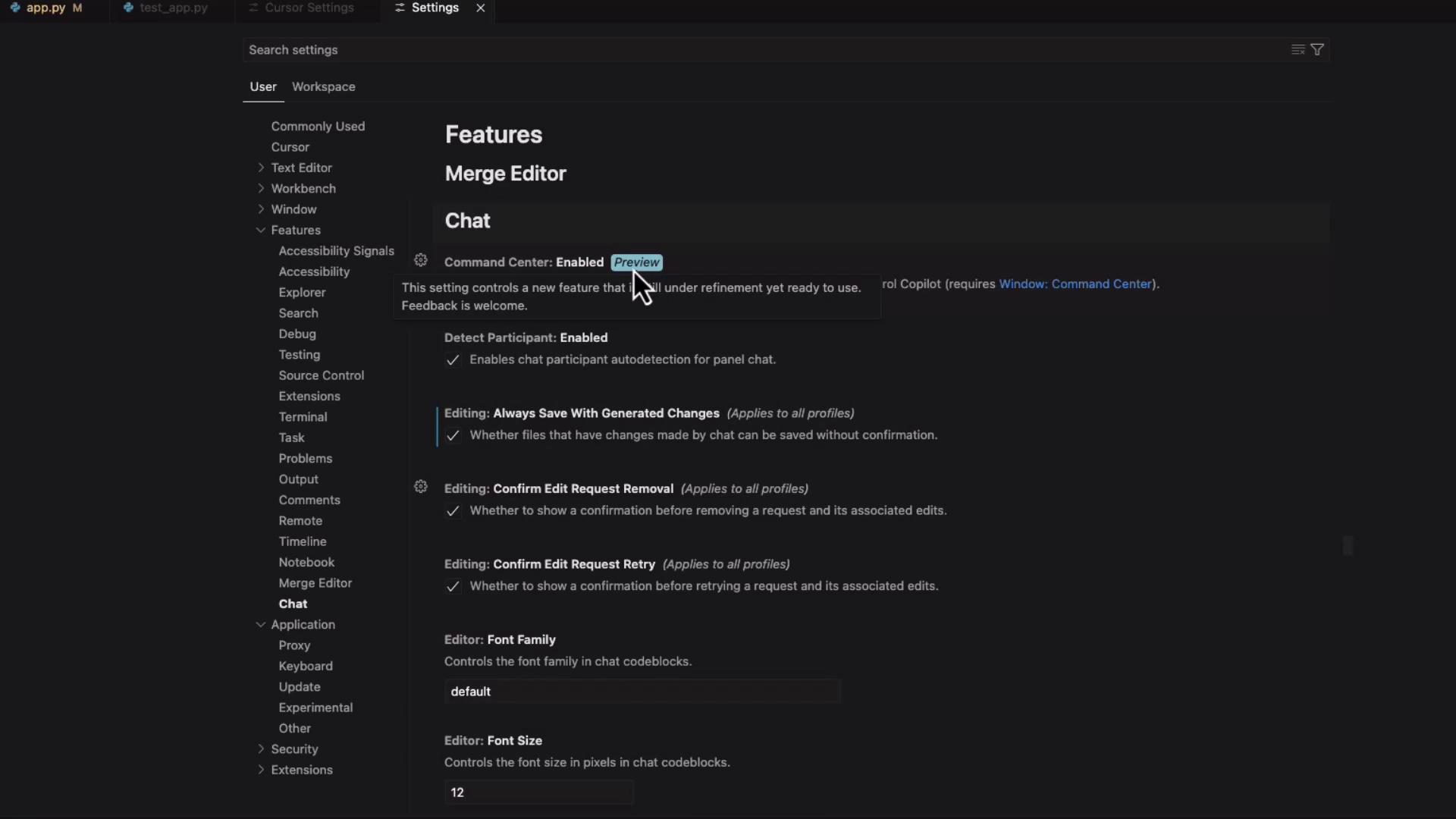
6. Experimental, Security, & Workspace Trust
6.1 Experimental Features
Try cutting-edge options like renderer profiling and shell environment timeouts:
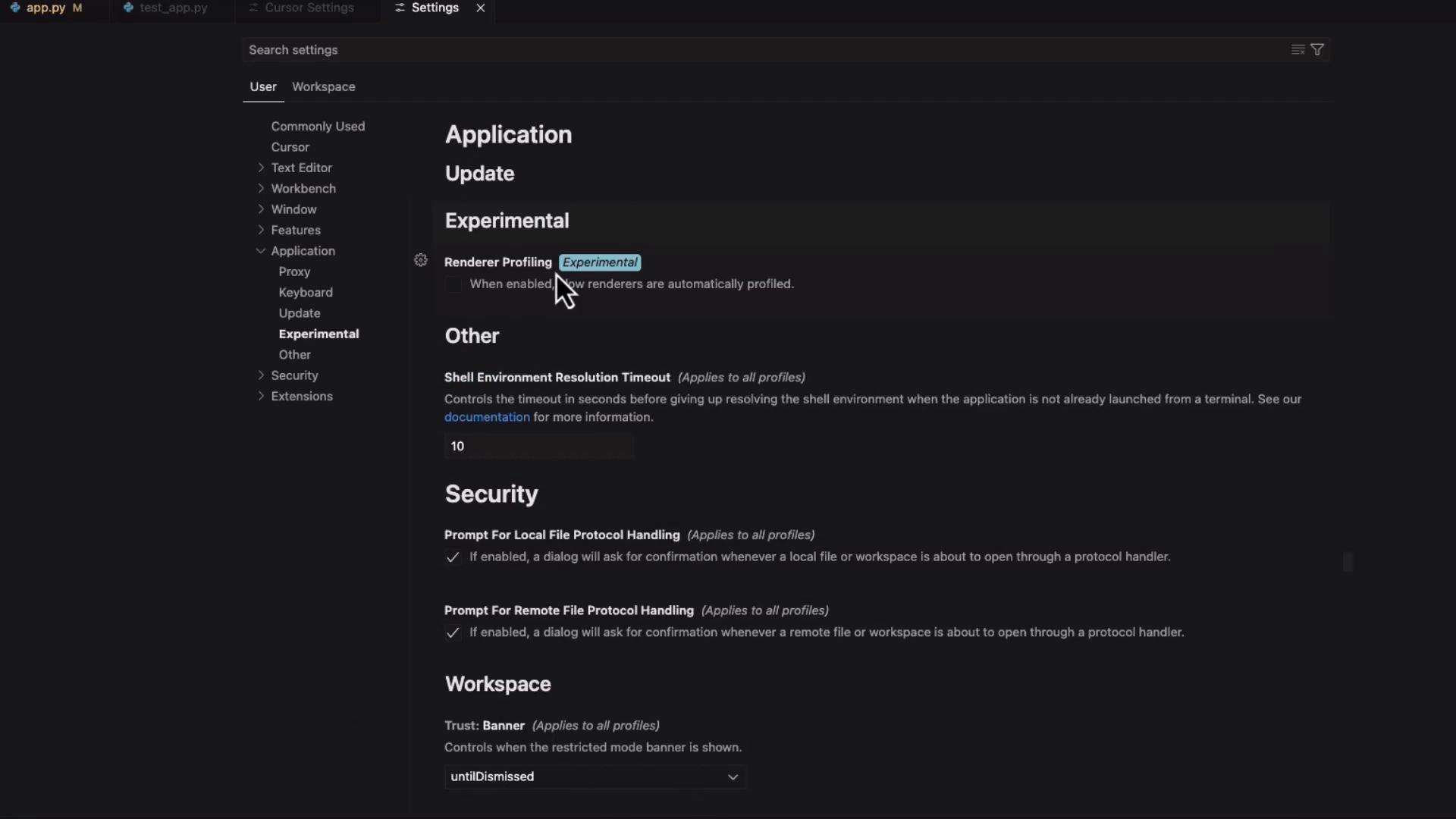
6.2 Security Settings
Manage workspace trust and URI handling in line with VS Code’s security model:
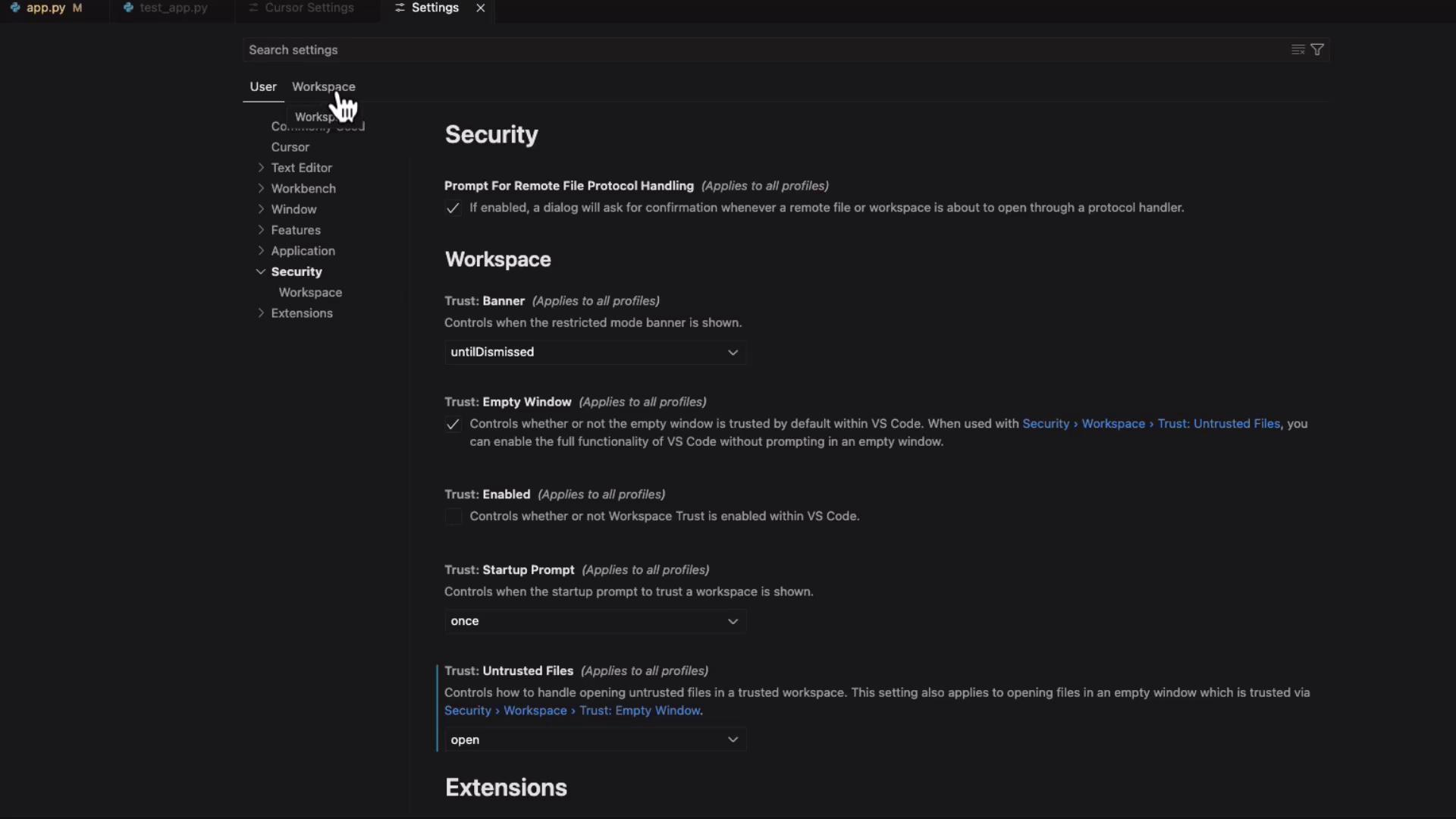
7. Best Practices for Profiles
- Spend 10–15 minutes exploring settings after installation or update.
- Create separate profiles for Work, Personal, and Side Projects.
- Delete stale profiles and start fresh when configurations become cluttered.
By following these steps, you’ll harness the full power of Cursor’s Profiles and Features to streamline your development workflows.
Watch Video
Watch video content